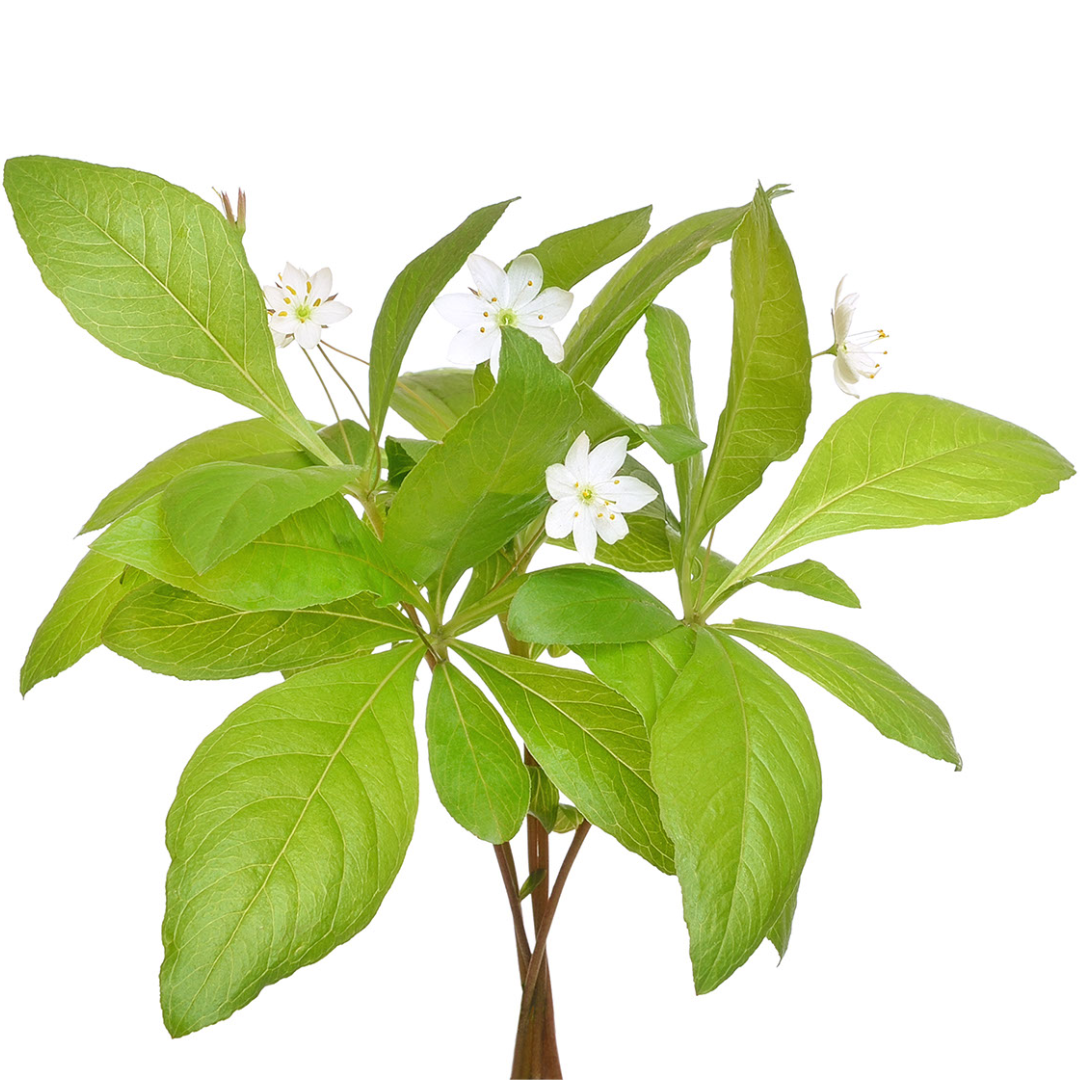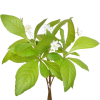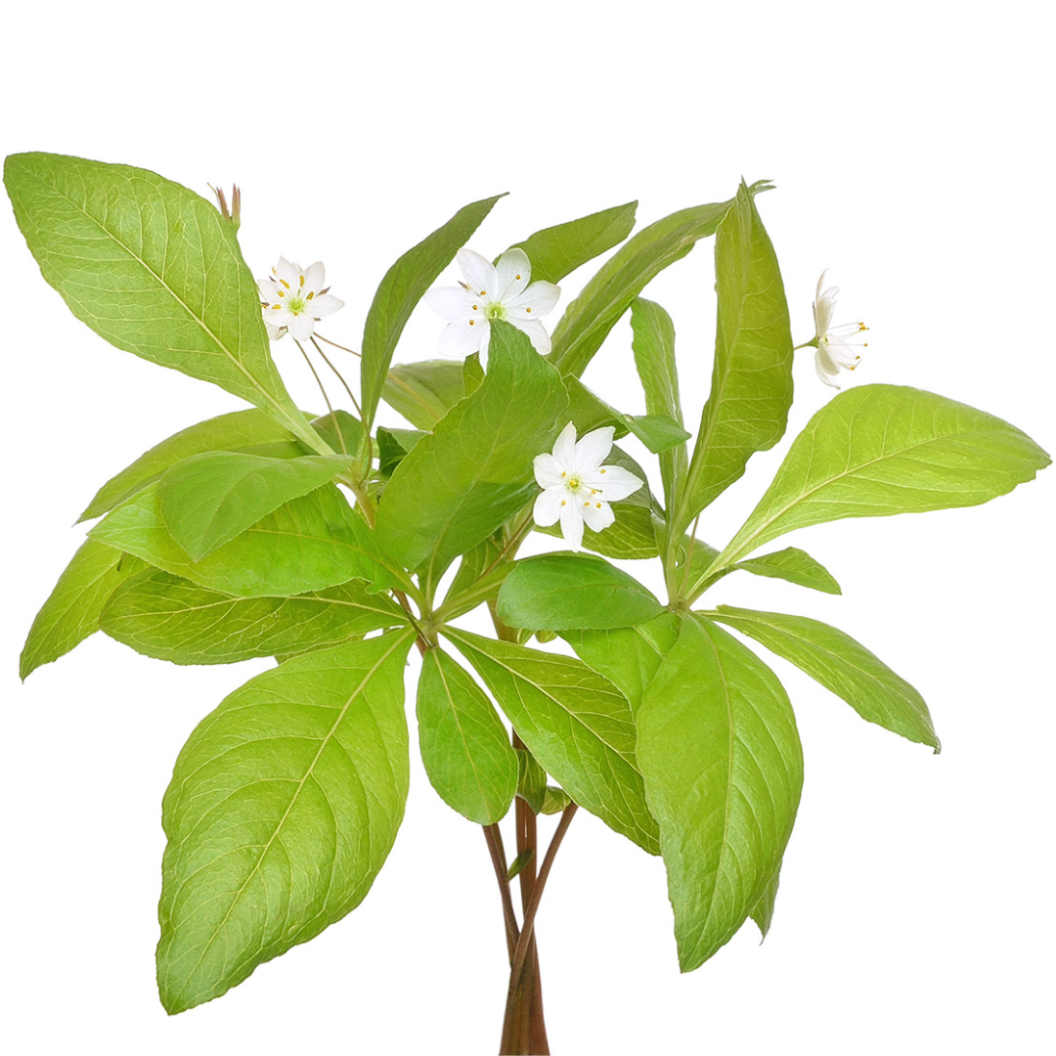




Chickweed
DESCRIPTION: Chickweed is a small and delicate flowering herb that grows close to the ground and is often found in lawns and gardens that provide ample moisture. Chickweed has a long history of being used for medicinal purposes due to its anti-inflamatory and anti-itching effects. It has also been used in traditional medicine across various cultures for the treatment of digestive problems, respiratory invections, and skin conditions. Some cultures have also utilized chickweed as a food source incorporating its sweet and nutty flavor into soups and stews.
SCIENTIFIC NAME: Stellaria media
OTHER NAMES: Starweed, Satin Flower, Tongue Grass, Mouse-Ear Chickweed, Winterweed, Stitchwort
LEAF TYPE: Broadleaf
FLOWERS: The flowers are small and dainty, with five white petals that are deeply divided, making them look like ten petals upon first glance. They have a delicate and slightly crumpled texture, almost like tissue paper, and are arranged in clusters at the end of the plant's thin stems.
LEAVES: The leaves are small and smooth, with a pointed tip and a rounded base. They grow opposite each other along the thin tem of the plant, and are arranged in pairs. The leaves are bright green in color, and have a slightly shiny satin-like appearance. They havea soft texture when touched.
LIFE CYCLE: Annual
HOW TO IDENTIFY: The easiest way to identify chickweed is to look for a small, low-growing plant with small white flowers and delicate, bright green leaves. The leaves will have an oval shape, pointed at the tip, and grow opposite each other along the stem. The flowers will be very small and white in color. Chickweed rarely grows taller than a few inches and thrives in moist soil. Additionally, when you crush the stem or leaves of chickweed, they have a slightly sticky or mucus-like texture, which can also help confirm its identity.
MECHANICAL CONTROL RECOMMENDATIONS:
1. Hand pulling - More Info
2. Mowing or Trimming - More Info
3. Mulching - More Info
4. Weed Fabric or Landscape Fabric - More Info
5. Flame Weeding - More Info
6. Soil Aeration- More Info
7. Plant Competition - More Info
8. Manual Edging - More Info
9. Regular Maintenance - More Info
10. Thinning and Pruning - More Info
CHEMISTRY RECOMMENDATIONS:
"Pre-emergent herbicides:
Prodiamine: This herbicide is commonly used to prevent the germination of chickweed seeds. It forms a barrier in the soil that prevents weed seeds from sprouting.
Dithiopyr: Another pre-emergent herbicide that works by inhibiting cell division in germinating weed seeds. It can provide residual control against chickweed.
Pendimethalin: This herbicide creates a barrier in the soil that prevents the emergence of weed seedlings, including chickweed.
Isoxaben: While more commonly used for broadleaf weed control, isoxaben can also provide pre-emergent control of chickweed in some cases.
Oryzalin: This herbicide is often used in cool-season turf to control annual grasses and broadleaf weeds, including chickweed.
Benefin: Used in combination with oryzalin, benefin provides pre-emergent control of various annual weeds, including chickweed.
Post-emergent herbicides:
2,4-D: A selective herbicide that targets broadleaf weeds, including chickweed. It's often used in lawns and turf areas.
Dicamba: Another selective herbicide effective against broadleaf weeds like chickweed. It's commonly used in combination with other herbicides.
MCPA: This herbicide is selective for broadleaf weeds and can be effective against chickweed. It's often used in lawns and pastures.
Triclopyr: A systemic herbicide effective against a wide range of broadleaf weeds, including chickweed. It's commonly used in non-crop areas.
Clopyralid: Effective against certain broadleaf weeds, clopyralid can be used to control chickweed in lawns and ornamental areas.
Carfentrazone: This herbicide is particularly effective against young chickweed plants. It's often used in turf and landscape settings.
Quinclorac: Used primarily in turf areas, quinclorac targets a variety of broadleaf weeds, including chickweed.
Glyphosate: While glyphosate is a non-selective herbicide that kills a wide range of plants, it can be used to control chickweed in areas where you want to completely clear vegetation. However, be cautious when using glyphosate near desirable plants, as it can harm them as well.
Selective herbicides:
2,4-D: This herbicide is widely used to control broadleaf weeds, including chickweed. It's often found in lawn weed control products and can be applied to lawns without causing harm to most grass species.
MCPA: Another broadleaf herbicide that works well against chickweed. It's often used in lawns and pastures.
Dicamba: Dicamba is effective against a range of broadleaf weeds, including chickweed. It can be used in lawns, as well as in agricultural and non-crop areas.
Triclopyr: Triclopyr is effective against a variety of broadleaf weeds, including chickweed. It's often used in non-crop areas, such as industrial sites, rights-of-way, and around ornamental plants.
Clopyralid: Clopyralid is commonly used to control broadleaf weeds, including chickweed, in lawns, turf, and ornamental settings.
Carfentrazone: This herbicide is particularly effective against young chickweed plants. It's often used in turf and landscape settings.
Quinclorac: Used primarily in turf areas, quinclorac targets a variety of broadleaf weeds, including chickweed.
Aminopyralid: Aminopyralid is used for controlling a wide range of broadleaf weeds, and it can be effective against chickweed in certain situations.
Non-Selective herbicides:
Glyphosate: Glyphosate is one of the most well-known non-selective herbicides. It's effective against a wide range of plants, including chickweed. However, it's important to note that glyphosate will kill all plants it comes into contact with, so it should be used carefully and only on the specific areas where chickweed needs to be controlled.
Glufosinate: Glufosinate is another non-selective herbicide that can control a variety of weeds, including chickweed. Like glyphosate, it should be used with caution to avoid damage to non-target plants.
Paraquat: Paraquat is a contact herbicide that can provide quick control of chickweed and other weeds. It's highly toxic and should be handled with extreme care, as it can be harmful to humans and animals.
Diquat: Diquat is a non-selective herbicide often used in aquatic and industrial settings. It can provide rapid foliar burn-down of chickweed and other weeds.
Recommended Prevention
Recommended Control

